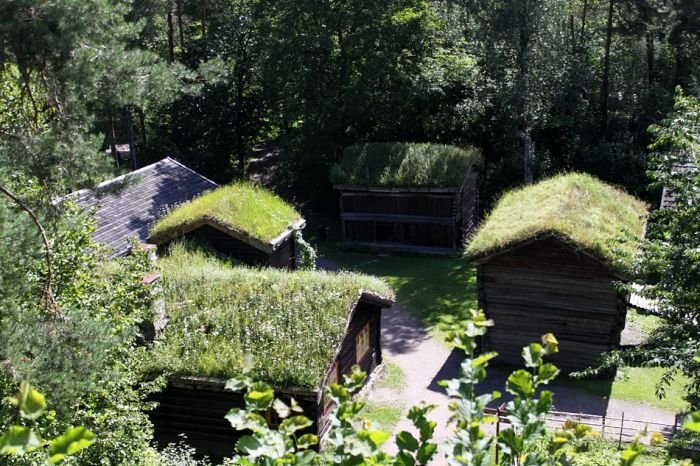|
|
Sod Roofs, Norway
|
A sod roof is well suited to a barter economy because the materials are ubiquitous and cost nothing, although the work is labour intensive. But a household would usually have a lot of manpower, and neighbours would usually be invited to take part in the roofing party, similar to a barn raising in the United States. The Norwegian term dugnad denotes an established custom in rural communities, where large undertakings were accomplished with help from neighbours.
Roofs in Scandinavia have probably been covered with birch bark and sod since prehistory. During the Viking and Middle Ages most houses had sod roofs. Churches and other buildings with steeper roofs were covered with boards, wood shingles, or lead.
In rural areas sod roofs were almost universal until the beginning of the 18th century. Tile roofs, which appeared much earlier in towns and on rural manors, gradually superseded sod roofs except in remote inland areas during the 19th century. Corrugated iron and other industrial materials also became a threat to ancient traditions. But just before extinction, the national romantics proclaimed a revival of vernacular traditions, including sod roofs. A new market was opened by the demand for mountain lodges and holiday homes. At the same time, open air museums and the preservation movement created a reservation for ancient building traditions.
|
|









